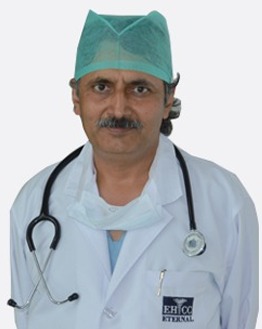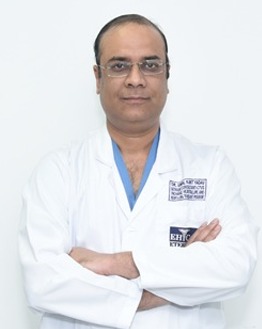An aortic aneurysm is a balloon-like bulge that develops in the aorta, which is responsible for carrying blood from the heart to the other parts of the body. When a part of the artery is weak, it is likely to feel more pressure when blood flows through it. This excessive pressure forces the blood vessels to bulge out words, resulting in the formation of a small bulge. As the best part of the aorta is comparatively weak, it can burst or dissect anytime. This can result in serious bleeding, which can give rise to complications like stroke and even prove to be life-threatening.
Depending upon their location, aortic aneurysms can be classified into two types - thoracic aortic aneurysm and abdominal aortic aneurysm.
Aneurysms are treated surgically and a wide range of surgical modalities are available depending upon the type of aneurysm, its size, location, and overall health of the patient.
Symptoms
Symptoms of aortic aneurysms do not usually show up early, and these become evident with time, as the aneurysms become large or burst.
- Pain in the chest or back
- Breathlessness
- Difficulty with solving food
- Persistent coughing
- Hoarseness
- Throbbing sensation near the navel
- Persistent and deep pain on either side of the abdomen
Causes
Some of the common causes of aneurysms include:
- Hypertension or high blood pressure
- Chronic infection involving the aorta
- Atherosclerosis or hardening of arteries due to plaque buildup
- High cholesterol
- Traumatic injury or blow
- Excessive smoking
- Genetic predisposition
Complications
One of the major complications of an aortic aneurysm is rupturing or dissecting of the aorta. Other complications associated with aortic aneurysms include:
- Blood clot
- Aortic regurgitation
- Unconsciousness
- Breathing difficulties
- Partial paralysis
- Stroke
Diagnosis
- Abdominal aortic aneurysms are usually diagnosed with the help of an ultrasound technique that uses sound waves to generate images of various parts of the body. CT scan may also be recommended in some cases for assessing the size and exact location of the aneurysms.
- Thoracic aortic aneurysms are usually detected with the help of a CT scan or MRI scan. An echocardiogram may be recommended to generate real-time images of the ascending aorta.
Treatment
Surgery primarily focuses on replacing the weaker section of the aorta with an artificially created graft. This is done by making a small cut in the patient's stomach or chest depending upon whether it is an abdominal aneurysm or thoracic aneurysm respectively. This is done under the influence of Anaesthesia.
The bulged section of the aorta is carefully excised and replaced with a graft using clamps. In some cases, the doctors may not remove the bulged section and place the graft alongside, so as to bring down the pressure on the walls of the artery. This procedure is commonly referred to as Endoaneurysmorrhaphy.
If the aneurysm is located in the ascending aorta, a heart-lung machine will be used. It may take about 2 to 4 hours to complete the surgery.
Why Eternal Hospital?
At Eternal Hospital, we have a highly qualified and dedicated team of cardiologists who are always committed to providing the latest and most advanced medical care to all our patients. Being a trusted name in healthcare, we act compassionately while ensuring confidentiality to those who need it. We have set high standards in patient-centric premium care along with outstanding patient safety and exceptional maintenance in a timely manner. We adhere to the use of up to the minute innovations to offer state-of-the-art treatments to our patients with unparalleled results.



